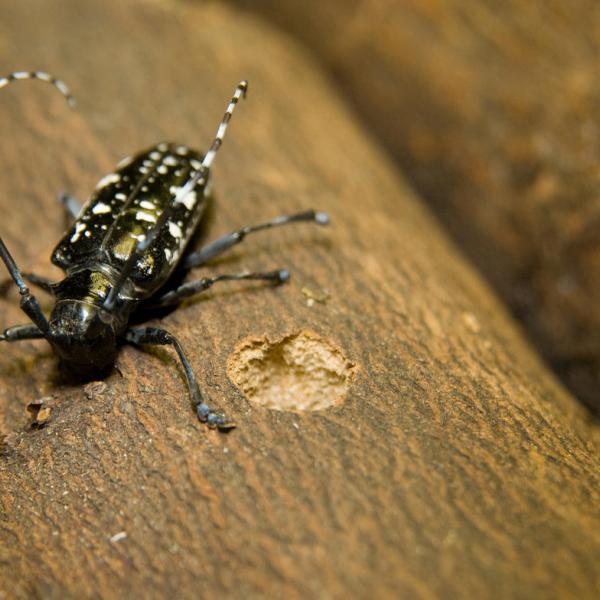
News Source
August is “Tree Check” month. It’s the time when ecologists are out surveying the forests to see if invasive insect species are showing up in the state. Here in Vermont scientists are primarily on the lookout for Asian longhorned beetle, Emerald ash borer, and hemlock woolly adelgid.
So far the longhorned beetle and the emerald ash borer haven’t infiltrated Vermont—but the insects have been detected in neighboring states.
Early detection can prevent the pest populations from becoming established in the state.
“The USDA designated August as tree check month primarily to survey for Asian long horned beetle,” says Emilie Inoue, a state pest survey coordinator with the Agency of Agriculture. “It’s particularly active at this time in the summer, and it can be easier to spot.”
Spreading despite cold winters
The Asian longhorned beetle was first detected in the United States in 1996 in Brooklyn, New York. It’s now spread to Chicago, Toronto, and the largest infestation is in Worcester, Mass.
The prevalence of hardwood species there is conducive to supporting the Asian longhorned beetle, says Inoue. “It does feed on a range of host species from 15 different plant families. The ones we’re concerned about here in Vermont, are the maples: sugar maple, red maple; willows; birches and poplars.”
It doesn’t seem like the cold winter has much of an impact on keeping the populations down, she says. They overwinter in the tree, the larvae actually tunnel all the way into the heartwood of the tree, so they’re pretty protected from the cold weather.
Can we stop it?
The best way to prevent the spread of the Asian longhorned beetle into Vermont is to avoid moving firewood from one location to another, says Inoue.
“This is actually a really easy way for Asian long and other invasive pests to hitchhike and get around to places they wouldn’t otherwise get to.”
Human behavior can help minimize the spread, but some extent of global exchange of insect species is inevitable, says Inoue.
“We have so much commerce going back and forth at a worldwide level, I think a certain extent of it is inevitable,” says Inoue. “Many of these pests we’re looking for, Asian longhorned beetle, Emerald ash borer, were introduced from places like China through solid wood packing material like pallets and creates that a lot of our commodities get packaged in.”
Even with regulations and inspection at ports, given the size of some of these insects, they’re bound to come in at some point.
Then, says Inoue, “if it’s the perfect environment for them, they’re going to take advantage of that and procreate.”